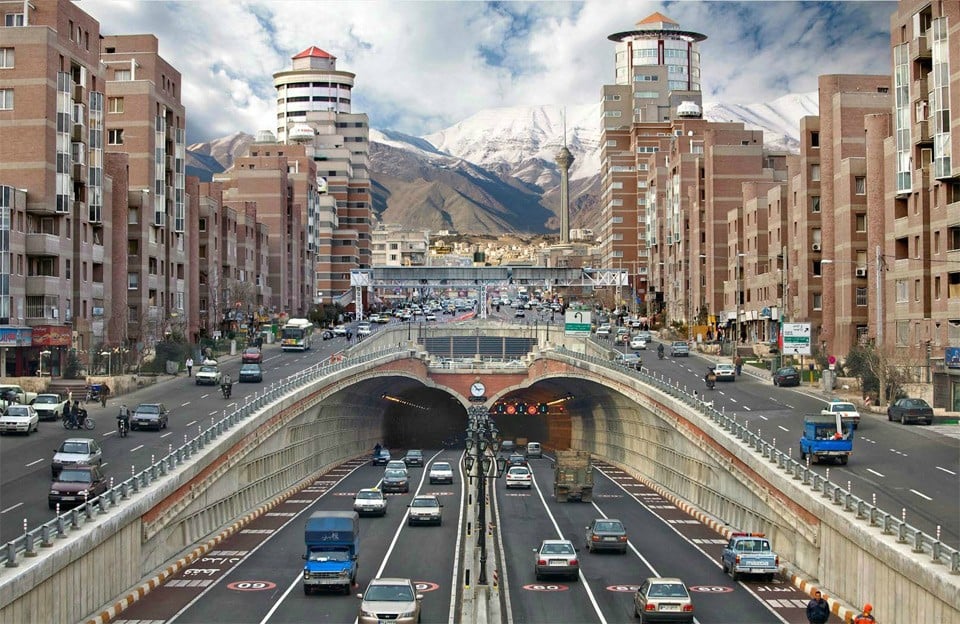Estimated reading time: 5 min
Tehran, the capital and largest city of Iran, now ranks among the world’s fastest growing cities. Its rapid and multifaceted growth has corresponded with a sharp rise in population leading many to believe the city has the potential to be a 21st century powerhouse. The recent lifting of several economic sanctions also make the country, already one of the richest in the Middle East, of particular interest to foreign investors. As history has shown us, when money pours in, infrastructure tends to improve. As such, Tehran is now becoming a city synonymous with emerging architecture and a political stability that will give them the opportunity to thrive.
Of course, the reasons behind new money flooding into Tehran has a lot to do with what the city, and indeed the country, will become over the coming decades. While much of Iran has remained the same since the 1979 revolution (the country was even likened to Cuba by one newspaper recently), change in the air. Arta Rostami Ravari, Managing Director of RMJM’s latest studio, RMJM Arta-Tehran, concurs: “There is absolutely no doubt Tehran is reinventing itself right now and going through a profound change.”
 The Museum of Contemporary Art remains a cultural beacon for architects in Tehran
The Museum of Contemporary Art remains a cultural beacon for architects in Tehran
The country’s wealth of natural resources suggest that the growth it is experiencing is likely to be sustainable in the long-term. Iran currently sits on 10% of the world’s proven oil reserves and with 15% of its gas reserves it is widely considered an “energy superpower”. The country also ranked first in scientific growth in the world (in 2011) and has one of the highest developments in telecommunications globally. Unsurprisingly, its economic growth in 2016 has outstripped many Western economies. The early indications point to a cultural boom that will see its capital, Tehran, become a ‘super-city’. Having grown from 700,000 to 15 million inhabitants, Tehran now houses more than the sum of the country’s next five major metropolitan areas and its growth shows little sign of slowing. This explosive growth has had numerous environmental and public health consequences including pollution and loss of arable land. Indeed, a 2013 World Health Organisation (WHO) report cited Iran as the eighth most air polluted country on the planet. One strategy to make a Iran less of a ‘one-city-country’ involved moving businesses (and employees) out of the capital city to cities such as Karaj, situated 20km west of the capital. As well as obvious challenges, this also presents architects and planners with an enormous opportunity to shape the country.
The Iran Historical Car Museum, which first opened in 2001, is about to undergo a significant revitalisation and represents RMJM’s first ever project in Iran. The museum is also seen as cultural symbol, signifying a willingness to make Iran a lot more than Tehran. Of course, the historical value of this particular project aligns perfectly with RMJM’s ethos. During its 60 year history, RMJM has planned and designed numerous museums worldwide including the Scottish Museum of Modern Art, the National Museum of Libya, the Woodhorn Northumberland Museum, the Edinburgh Castle National Museums of Scotland and the National War Museum of Scotland.
Led by Managing Director, Arta Rostami Ravari, the museum is seen as a key project, linking both old and new Iran. “You can feel an atmosphere which is related to the past,” she said. “This is very important and informs the whole design process. I think this will be the way for many projects over the coming years in this country. We are linked inextricably to the past even as we move forward with new technology and design processes. Architecture in Iran has the chance to offer the best of both worlds.”
What, then, can Iran become? Realising its potential will take more than natural resources and political stability. The rate in which Tehran is growing means that planners must heed the lessons from cities which have expanded similarly. Fortunately, many of the cities that have achieved successful rapid expansion are located in neighbouring countries. RMJM’s experience in these cities make it well placed to help shape the future of a modern Iran.



Link exchange is nothing else except it is just placing the other person’s blog link on your page at appropriate place and other person will also do similar for you.
Wonderful, what a weblog it is! This weblog provides helpful
data to us, keep it up.
Thanks for any other informative site. Where else could I
am getting that type of info written in such an ideal means?
I’ve a challenge that I’m simply now operating on, and I’ve been on the look out for such information.